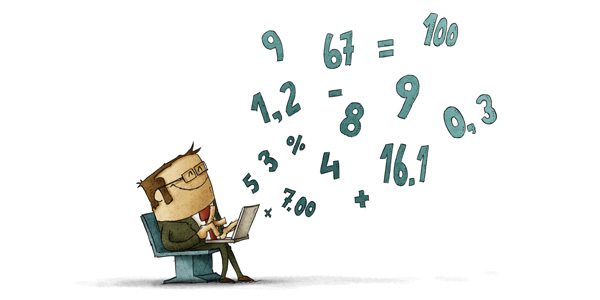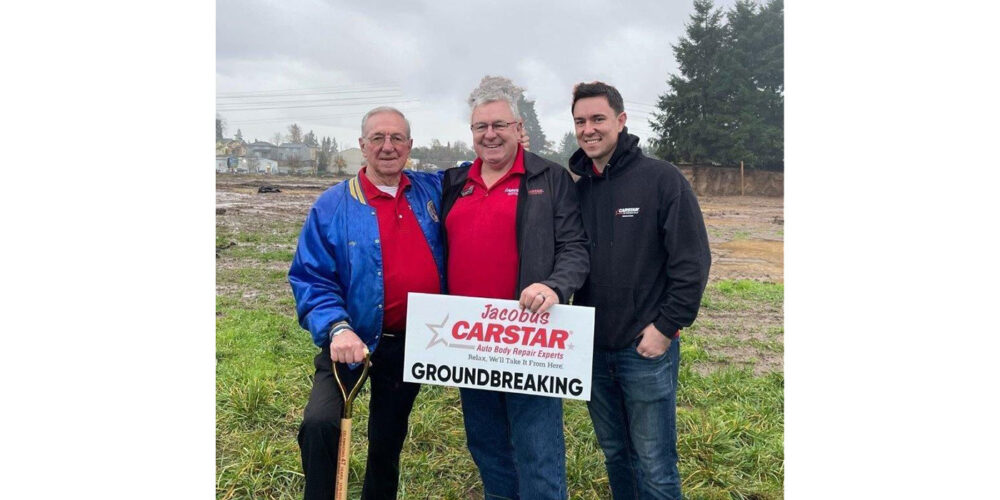
This is the last of the math…I promise! For the third straight month now, I’ve been on a quest to drive more rigor in managing a body shop by the numbers. What numbers, you ask? Or why should I care, you ask? I’m convinced, after all my many moons in our industry, that consistently collecting the same (few) shop numbers each month and then acting on what those numbers said is the biggest key to body shop profits.
Over the past two months, I’ve offered four of my favorite body shop numbers and what I think a good answer looks like:
Close rate (how many estimates turned into ROs)
Formula = Number of repair orders ÷ number of estimates
Examples: 41 ROs ÷ 60 estimates = 68% closed or 154 ROs ÷ 198 estimates = 77% closed
Mark Clark’s benchmark = 65% closed
*Recent BSB survey suggested closer to 75% (smart readers!)
Production efficiency (billed labor hours ÷ total technician contact hours)
Formula = Labor hours sold ÷ labor hours available
Examples: 35 hours sold ÷ 40 hours available = 87.5% efficient or 903 hours sold ÷ 728 hours available = 124%
Mark Clark’s benchmark = 140% efficient (56 hours sold ÷ 40 hours available = 140%)
*Counting all who touch the vehicle during repair
Sales mix (measures what portion of the shop sales is labor, parts, P&M, sublet)
Formula = Sale component ÷ total sale
Mark Clark’s benchmark = Labor, 44%, parts, 42%, P&M, 10%, sublet, 4% = total dollar sale = 100%
Example: $125,000 total shop sales last month (before taxes)
$55,000 labor sold = 44%
$52,500 parts sold = 42%
$12,500 P&M sold = 10%
$5,000 sublet sold = 4%
Parts-to-labor ratio (the age-old repair-or-replace question)
Formula = Total parts sales ÷ total labor sales
Mark Clark’s benchmark = 95% (or more!)
Example: $1,250 parts sold ÷ $1,300 labor sold = 96% or $51,000 parts sold ÷ $48,500 labor = 106% or 39% parts ÷ 47% labor = 82% P-L or 43% parts ÷ 43% labor = 100% P-L
Paint & Material Sales
In this column, I’ll share my benchmarks and my math for the one management number that every body shop spends at least some math time on – paint and material (P&M) sales and costs.
I said last month that the first place I start tracking P&M numbers is where it matters most: how much P&M the shop is selling. Most shops want to start the P&M discussions with me by telling me how much they spent last month. By simply adding up how many dollars of P&M your shop sold last month, we’d have a good start to a rational discussion on P&M profitability. Bragging about your shop’s staggering discount on paint doesn’t put money in the bank. The difference between what the shop sold and what it spent is where the money comes from.
To make it easier to talk about the P&M number going forward, we’ll describe it as a percentage of shop sales. Without any taxes added in, take the total shop sales for the period and multiply by 10%. That’s the minimum amount of P&M the shop should be selling on their repair orders, I contend. I understand that the body shop’s P&M sale is a multiple of refinish labor hours and the local P&M allowance. If you can’t change the P&M allowance (no kidding?), then the trick is to write more refinish time. Before you say you can’t do that, attend any of the estimate writing classes the paint companies offer their customers. You’d be surprised what a difference education makes in selling P&M on an RO.
So if I’m hopeful your shop is selling 10% of their sales in P&M, why not sell 15% by stuffing even more time on the estimate? Well, many insurance company DRPs watch this number very closely at their partner shops and likely have a scoresheet goal they use as a benchmark. For years, the programs I saw used 10% as their upper limit; if you sold them 15% of the repairs in P&M over their next measurement period, they’d drop by for a chat. I see from some more current industry figures that over 10% but under 11% is now acceptable. No DRPs in your shop? Then sell P&M to the best of your abilities!
P&M sales (measures what percent of shop sales were P&M)
Formula = P&M sales ÷ total sales (before taxes)
Mark Clark’s benchmark = 10%
Example: $13,850 P&M sales ÷ $126,500 total sales = 10.9% P&M sale or $235 P&M sale ÷ $2,825 RO = 8.3% P&M sale
P & M Expense
Using the same simple “percentage of sales” formula, I contend your shop should spend 6.5% or less on P&M each month. First, be sure that what you’re putting in the P&M purchase bucket should really be there. And rather than argue endlessly about what should correctly be in the P&M category, just make sure the same things are in there for the next comparison period. If your shop was spending 7.26% of sales on P&M last month and spends 7.06% next month, it’s still a win. Until you do the math and measure your own shop’s percentages, it’s all a big guess. For sure, $XX,XXX dollars (or whatever amount the owner was complaining to me about) is a lot of money. Often, it’s the biggest single check the shop writes because it’s to one vendor. In fact, both labor and parts cost the shop many, many times more but are paid in multiple checks (see no. 3 sales mix split above).
In keeping with my “big-picture” shop numbers, rather than breaking the 6.5% of sales P&M cost down into smaller buckets for topcoats, undercoats, solvents, abrasives, adhesives, fillers, etc., I like the 70% rule. This rule proposes just two buckets: 70% of the typical collision shop purchases are for liquid and 30% is spent on everything that isn’t liquid. I collected this very information from lots of PBE jobbers over the years and still like my 70%. Is the answer really 75% liquid and 25% sundries? Or is it 65% paint and 35% sandpaper, or two-thirds cans and one-third boxes? Yup, your choice, but for sure it’s not 50-50 or 90-10. However, one month it could certainly be far out of whack. Use three months, 90 days, one quarter before having confidence in your shop’s average P&M costs.
P&M cost (measures what percent of shop sales were spent for P&M)
Formula = P&M costs ÷ total sales (before taxes)
Mark Clark’s benchmark = 6.5% (70% liquid = 4.55% of sales, 30% sundries = 1.95% of sales)
Example: $7,590 P&M cost ÷ $126,500 total sales = 6.0% P&M cost or $15,750 P&M cost = $11,025 liquid + $4,725 sundries (70-30)
Summary
Back to where we started. We calculated how much P&M the shop sold last month and figured it should be 10% of sales. Using my benchmark for P&M purchases as a percentage of sales dollars at 6.5%, we’re ready to determine what the shop is making. Called gross profit or gross margin (same thing), the formula is sale price minus cost divided by the sale price. So, a $100 sale minus $65 cost equals $35 divided by $100 equals 35% gross profit. In my example shop above, they sold $13,850 in P&M, so they should have made at least $4,850 gross profit (35%).
I know shops who are disappointed if they don’t make 50% or better gross margin on P&M. To get there, they are mixing absolutely everything across their scale and tying every drop to the right RO. My more modest goal is to get the shop making a consistent 40% on P&M every month – a realistic objective for the regular-human body shop owner. At 40% gross on paint and material, move on and fix the next thing.
Three months ago, I quoted Steven Covey’s successful habit no. 2, “Begin with the end in mind,” as a great place to start doing some body shop math. Do your results for my hand-picked collision numbers look like my benchmarks? Only one way to find out. Get out the pocket calculator, friend.
Mark R. Clark is the owner of Professional PBE Systems in Waterloo, Iowa. He’s a popular industry speaker and consultant and is celebrating his 31st year as a contributing editor to BodyShop Business.
More from Mark Clark:
Start Small When It Comes to Tracking the Financials in Your Body Shop














